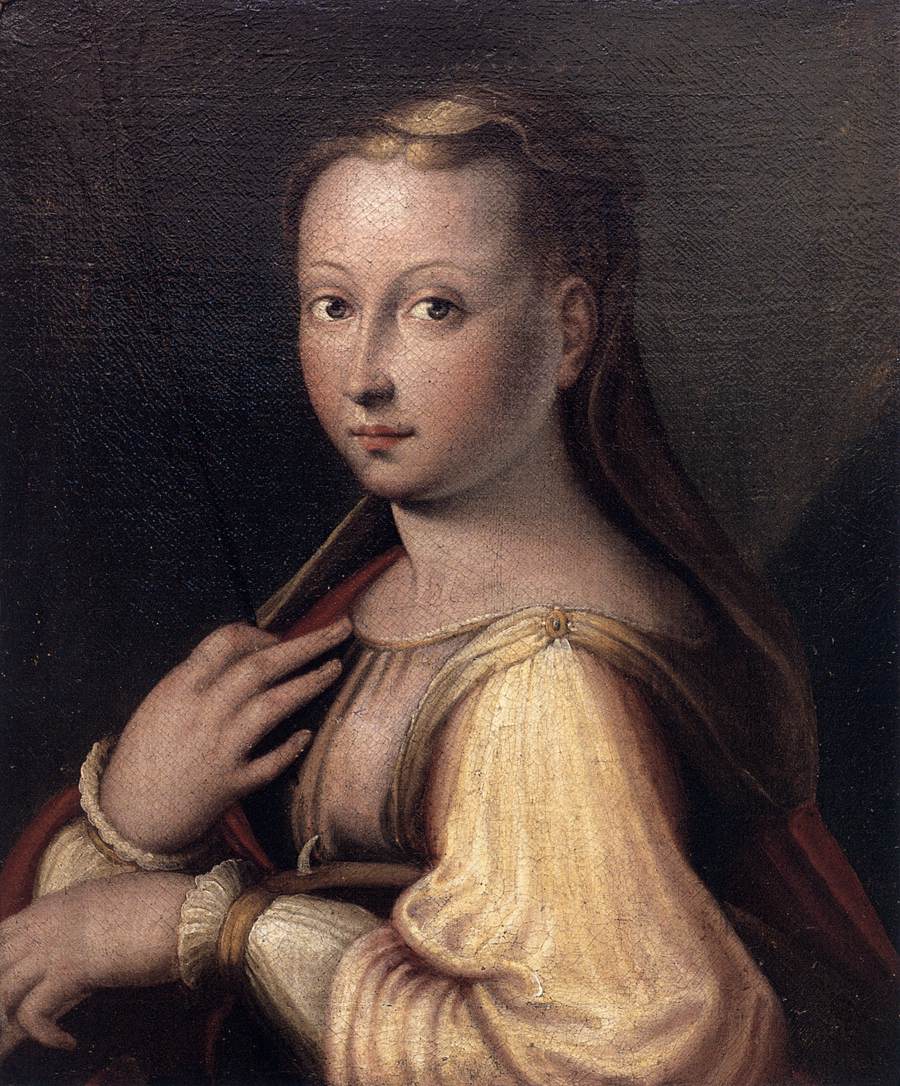More about Barbara Longhi
Works by Barbara Longhi

Sr. Contributor
Family connections were one of the only ways for women to become artists in the centuries before the women’s liberation movement, and Barbara Longhi is no exception.
Barbara Longhi was the daughter of the Mannerist painter Luca Longhi. She began her artistic training as many female artists did at the time – as assistants to their dear old artist dads. When taking the long view of feminist art, it’s easy to see that there were “great women artists,” but also that women did not have access to traditional avenues to art careers. Rather, they were often the anonymous wives, sisters, and daughters who assisted in workshops run by men. Sometimes these men taught their female counterparts how to make it as independent artists. Such was the case for Barbara Longhi.
Luca Longhi trained both of his children, Barbara and her brother Francesco, to carry on the family trade. The children eventually worked up to collaborating on several works with their father in their family’s studio in Ravenna, Italy. To add to her artistic education, Barbara studied the work of the masters who came before her. She was particularly inspired by the works of Parmigianino and Antonio da Correggio. She started out making small devotional works that patrons would have used during their private prayer times. Before long, she started to gain some notoriety.
Luca went one step further than many other artist-teacher-dads of the time. Rather than just utilizing Barbara as just a cog in his workshop wheel, Luca also gave his daughter a crash course in the business of art. Luca taught Barbara how to market and sell her work to the local elite, the wealthy patrons who commissioned and collected fine art. This was perhaps even more important than her initial fine arts education. After she completed her training in 1570, she continued to work alongside her family, but also began to dabble in her own ventures. In a 1575 lecture in Bologna, Maurizio Manfredi publicly praised Barbara as a talented portrait painter. Known for admitting women to its university beginning in the thirteenth century, Bologna was the most progressive Italian city for women who wanted to be artists. Bologna boasted accomplished Renaissance women like Lavinia Fontana and Elisabetta Sirani.
After 1600, Barbara focused on the intimate, devotional scenes for which she is now known. Unfortunately, not much of Barbara’s work has survived. What we have today is a small number of works with religious themes, reflecting the conservative cultural responses of the Reformation and Counter-Reformation. Barbara and her father both spent their whole lives in their native Ravenna. The City of Ravenna Museum of Art owns seven of Barbara’s paintings, nearly half of all the extant works. Like her father, she enjoyed a considerable measure of fame and fortune in her own city, but because she did not travel much, few people outside of Ravenna know about this woman who beat the considerable odds that were stacked against her.
Sources
- Antiques and the Arts Weekly. “Italian Women Artists From Renaissance to Baroque.” 7 May 2007. https://www.antiquesandthearts.com/talian-women-artists-from-renaissanc…. Accessed 15 March 2021.
- Artsy. “Barbara Longhi.” Artists. https://www.artsy.net/artist/barbara-longhi. Accessed 15 March 2021.
- Grove Art Online. “Longhi family (i).” Oxford Art Online. https://doi.org/10.1093/gao/9781884446054.article.T051780. Accessed 15 March 2021.
- Guerrilla Girls. The Guerrilla Girls’ Bedside Companion to the History of Western Art. New York: Penguin Books, 1998.
- Kingsley, Jenny. “Renaissance Women artists - who were they?” Cassone. February 2014. http://www.cassone-art.com/magazine/article/2014/02/renaissance-women-a…. Accessed 15 March 2021.
- Kren, Emil, and Daniel Marx. “Biography of Longhi, Barbara.” Web Gallery of Art. https://www.wga.hu/bio_m/l/longhi1/barbara/biograph.html. Accessed 15 March 2021.
- National Museum of Women in the Arts. “Barbara Longhi.” Clara Database of Women Artists. 2008. https://web.archive.org/web/20110721213853/http://clara.nmwa.org/index…. Accessed 15 March 2021.
- Nochlin, Linda. “Women Painters and Germaine Greer.” The New York Times. 28 October 1979. https://www.nytimes.com/1979/10/28/archives/women-painters-and-germaine…. Accessed 15 March 2021.
- Prabook. “Barbara Longhi.” https://prabook.com/web/barbara.longhi/3742358. Accessed 15 March 2021.
- Tinagli, Paola. Women in Italian Renaissance Art: Gender, Representation, and Identity. Manchester and New York: Manchester University Press, 1997. https://books.google.com/books?id=hMB_ysyXfhsC&pg=PA12#v=onepage&q=long…. Accessed 15 March 2021.
Featured Content
Here is what Wikipedia says about Barbara Longhi
Barbara Longhi (
English: /bɑːrˈbɑːrə ˈlɒŋɡi/ bar-BAR-ə LONG-ghee,
Italian: [ˈbarbara ˈloŋɡi]; 21 September 1552 – 23 December 1638) was an Italian painter. She was much admired in her lifetime as a portraitist, although most of her portraits are now lost or unattributed. Her work, such as her many Madonna and Child paintings, earned her a fine reputation as an artist.
Check out the full Wikipedia article about Barbara Longhi











